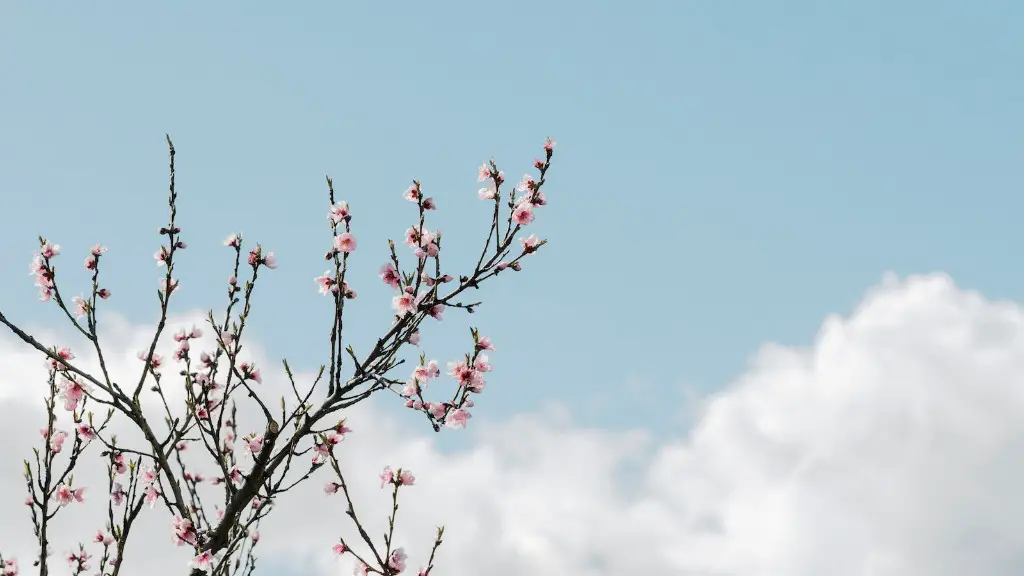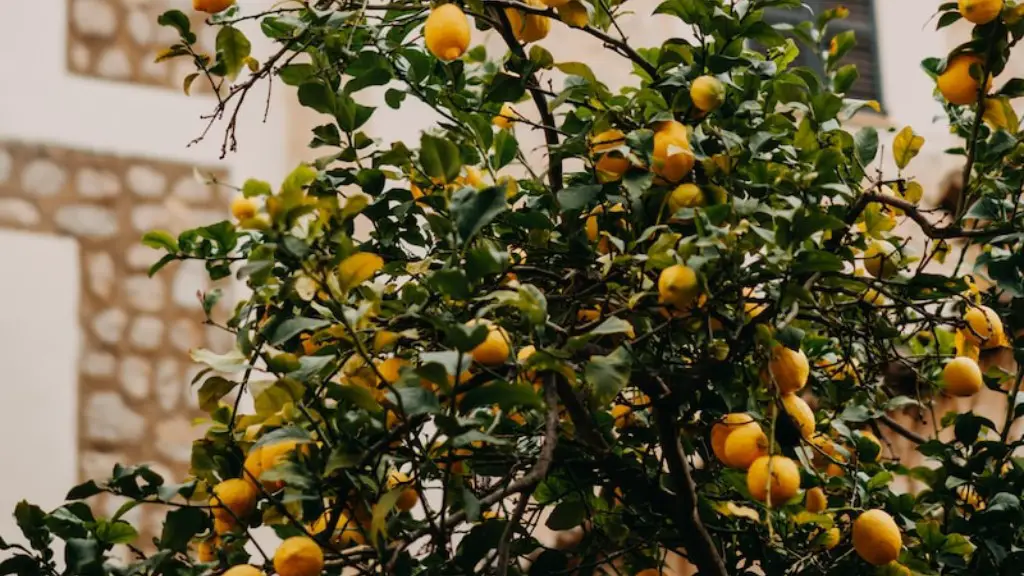Preparing the Trim
In order to properly trim a flowering cherry tree, proper planning and preparation is key. A quality pair of pruning shears is essential for this job, along with gloves and proper attire. It is generally easier to trim a tree when it is in full bloom and flowering, as the visible branches and shapes are easier to see and identify. When trimming other trees in early spring, one can identify the flower buds for further clarity.
It is important to remember that the shape of the tree should be left intact, with smaller branches pruned if needed. Large dead branches or significant dieback may need more attention, and special care should be taken to prune them properly. Before doing any trimming, it is advised to view the tree from different angles and perspectives. This will give the trimmer an idea of what overall shape and design she/he is aiming for when performing any trimming.
Shaping and Pruning
When pruning a flowering cherry tree, its shape should be preserved with small prunings and larger branches removed only when necessary. It is important to remember that flowering cherry trees flower on new wood, meaning the previous season’s growth will be the part of the tree that holds the most blooms. Removal of a large branch or radical pruning can adversely affect the following blooming season.
When performing the actual pruning, it is important to avoid taking off too much foliage or branches at once. Instead, it is recommended to take only one or two branches off at a time, as this will help maintain the overall shape of the tree better. The basic aim is to be as respectful as possible of the tree’s natural form, while at the same time removing any dead or weakened branches.
When pruning, it is important to avoid leaving any stubs. This can be critical to the tree’s health, as the remaining stub can be easily infected by pests and disease. Instead, make sure to cut the branch at a diameter or a slightly sloping angle, taking care to make a precise, clean cut. These cuts should be made just above the branch collar, which can be found at the point where the branch attaches to the trunk.
Cleaning and Maintenance
It is important to clean up any debris left by pruned branches. It is important to clean up both the area around the tree and the tree itself, as this will prevent the spread of disease and infection. Pruned branches should be disposed of as soon as possible, as they can be a source of fungal spores and other types of infections. Care should also be taken to avoid burning any pruned branches, as this can have unwanted environmental impacts. After pruning, it is also important to check the tree periodically for any new pests or diseases.
Fertilizing a flowering cherry tree after pruning can also be beneficial, as it helps the tree recover from any shock induced by the pruning and can help promote healthy, new flowers for future blooms. Mulching is also beneficial, as it helps conserve moisture, improves soil composition, and helps prevent weed growth.
Tools and Gear
When pruning a flowering cherry tree, it is important to have quality tools on hand for the job. A pair of quality pruning shears is essential, along with a pair of gloves, as these tools can help with precision cuts and provide protection against debris and infection. It is also important to have loppers handy, as these can be useful for cutting off thick branches. A pole pruner can also be useful, particularly when there are high branches that are hard to reach. Protective eyewear and a face mask can also help prevent any debris from getting into the eyes or lungs.
Cleaning and Disinfecting the tools
After pruning a flowering cherry tree, it is essential to clean and disinfect all tools used. This can help reduce the risk of disease spread and keep the tree healthy. The pruner or shears should be wiped down with a cloth and a mixture of water and soap, and then dipped in a solution of bleach and water. This helps to disinfect the blades and prevents the spread of infection from one tree to another. The cloth should be changed often during this process.
It is also important to clean the pole pruner when finished. This can be done by wiping it down with a rag and the soap and water solution, followed by a neutralizing solution to remove any residual bacteria from the blades. It is then important to dry the tool before storing it away, as moisture can cause corrosion on the blades.
Conclusion
Properly trimming a flowering cherry tree is essential not only for its aesthetic appeal, but also for its health and life longevity. With proper care, planning and maintenance, a flowering cherry tree can bring beauty and joy to any landscape. Preparation, tools and trimming techniques are essential to keeping the cherry tree in its best shape. Finally, pruning and clean up the tools and debris are the last steps to complete the task and insure the tree’s health and beauty for years to come.

